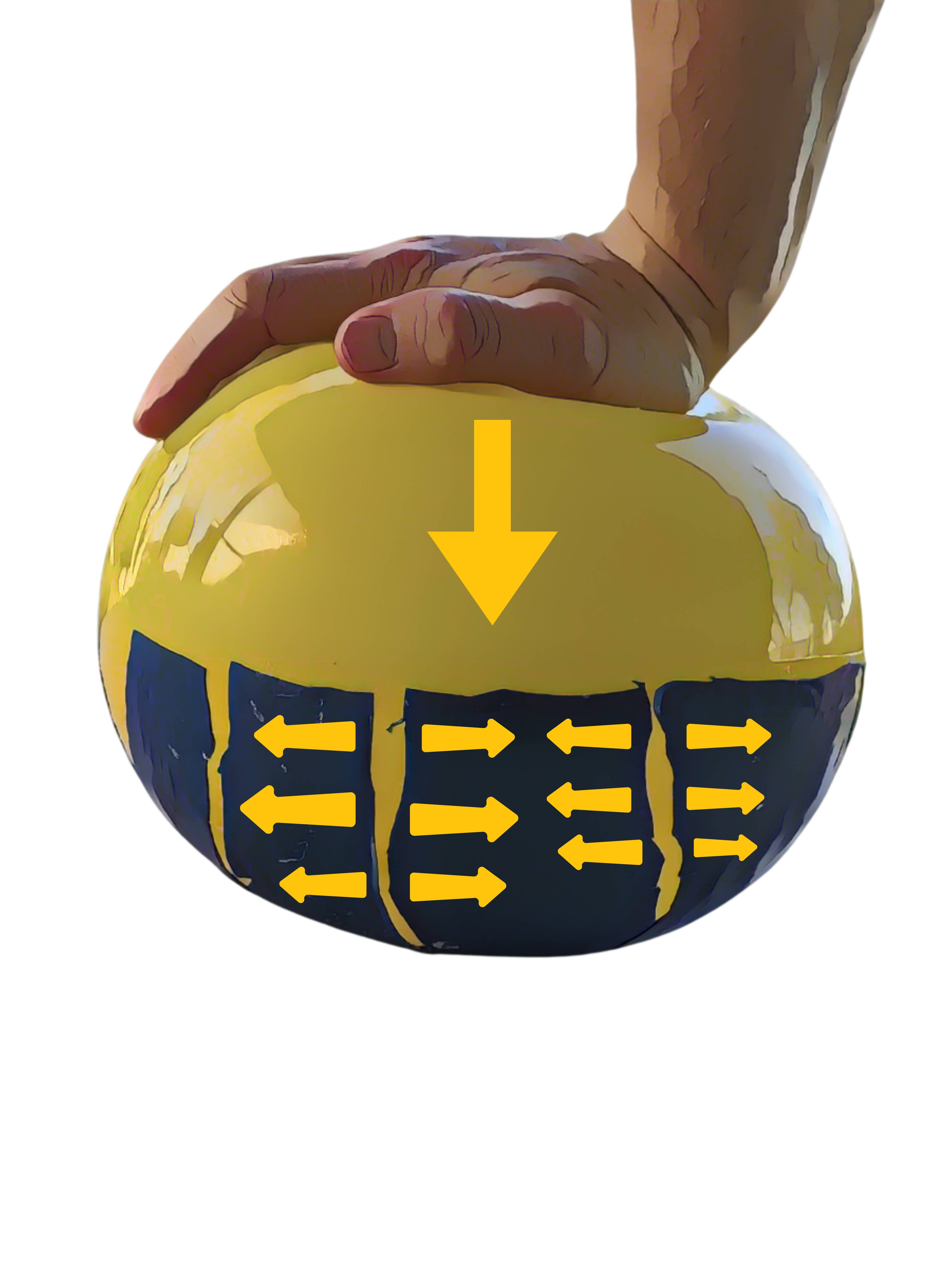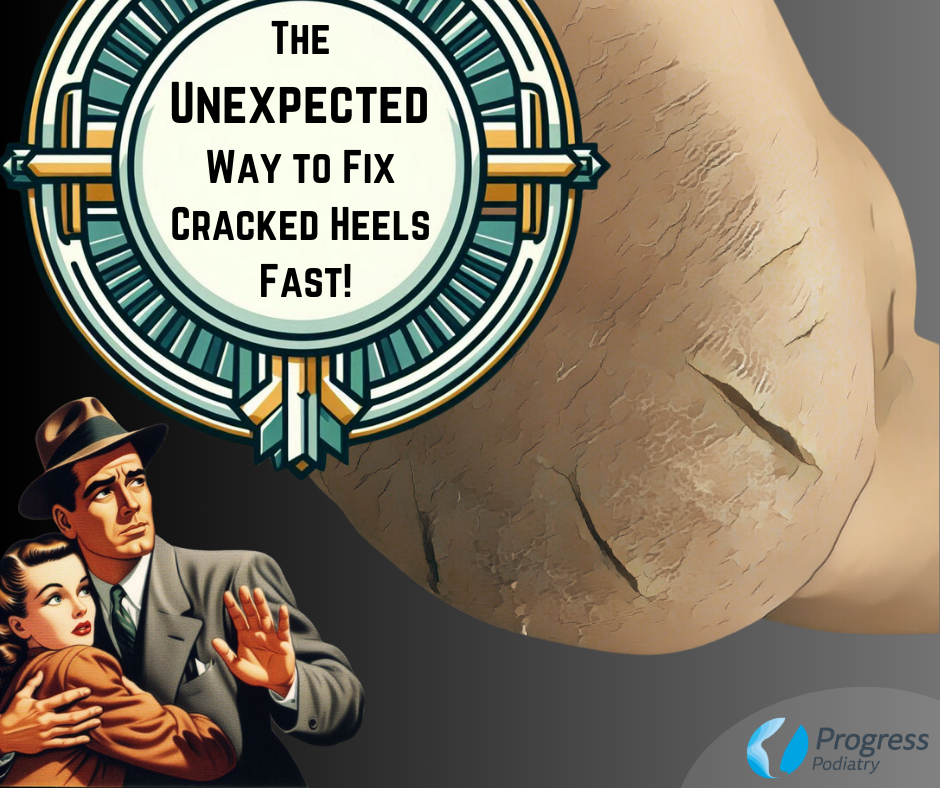
Cracked heels are more than just a cosmetic issue—they can cause significant pain and discomfort. If you’re frustrated by treatments failing to deliver results, there’s an unexpected solution that fixes cracked heels fast: medical grade adhesive. But don’t be tempted to go DIY with super glue! Read on to find out why.
The Problem with Cracked Heels
Heel fissures start as minor cracks in the skin’s callused areas. As they deepen, they can lead to pain, infections, and other complications, particularly in those who have diabetes or thyroid issues. Common contributors include:
- Dry and Thick Skin: Leads to initial cracking.
- Heel Pressure: Causes the skin to split under stress.
- Improper Footwear: Especially open-back shoes, which exacerbate the problem.
The Innovative Fix: Medical Grade Glue
Medical grade glue is changing the game in heel care. The adhesive seals the cracks, holding up to the stress on the skin as the heel hits the ground. It creates a protective barrier against bacteria and accelerates the healing process.
How It Works
The adhesive is a safe glue for your skin, closing the fissure almost instantly. Not only does it provide immediate relief, but it also allows you to continue your daily activities comfortably.
According to a Cochrane Review, medical-grade adhesives can often be as effective as stitches for closing wounds, but without all the hassle. This makes it the perfect solution for those deep heel cracks that seem to never get better.
Exciting News for Progress Podiatry
In recent times I have been using this medical-grade adhesive to treat heel fissures. Unlike regular glue, this special adhesive is designed for medical use. So far, I’ve been really impressed with the results.
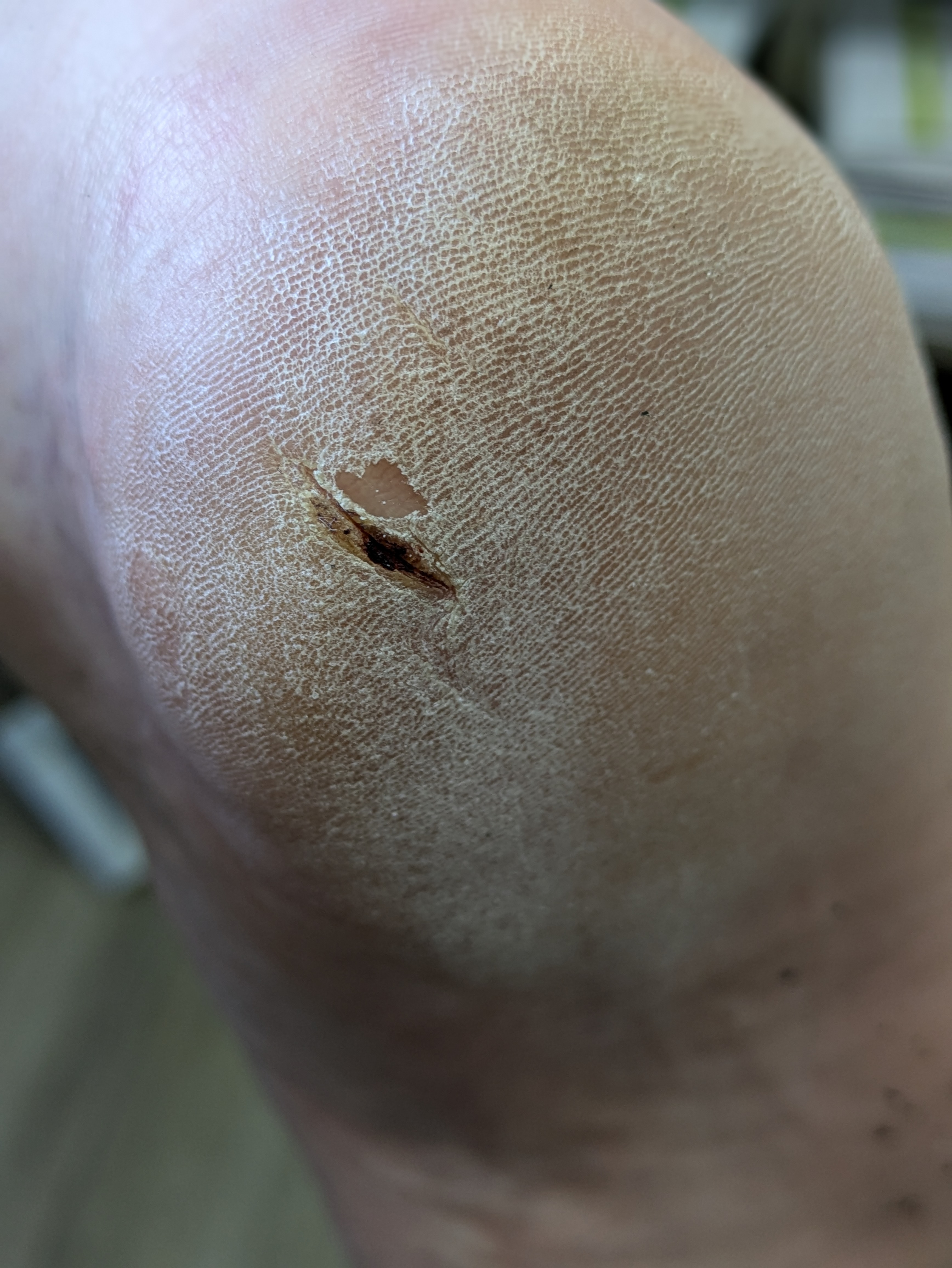
Initial Appointment – painful heel fissure
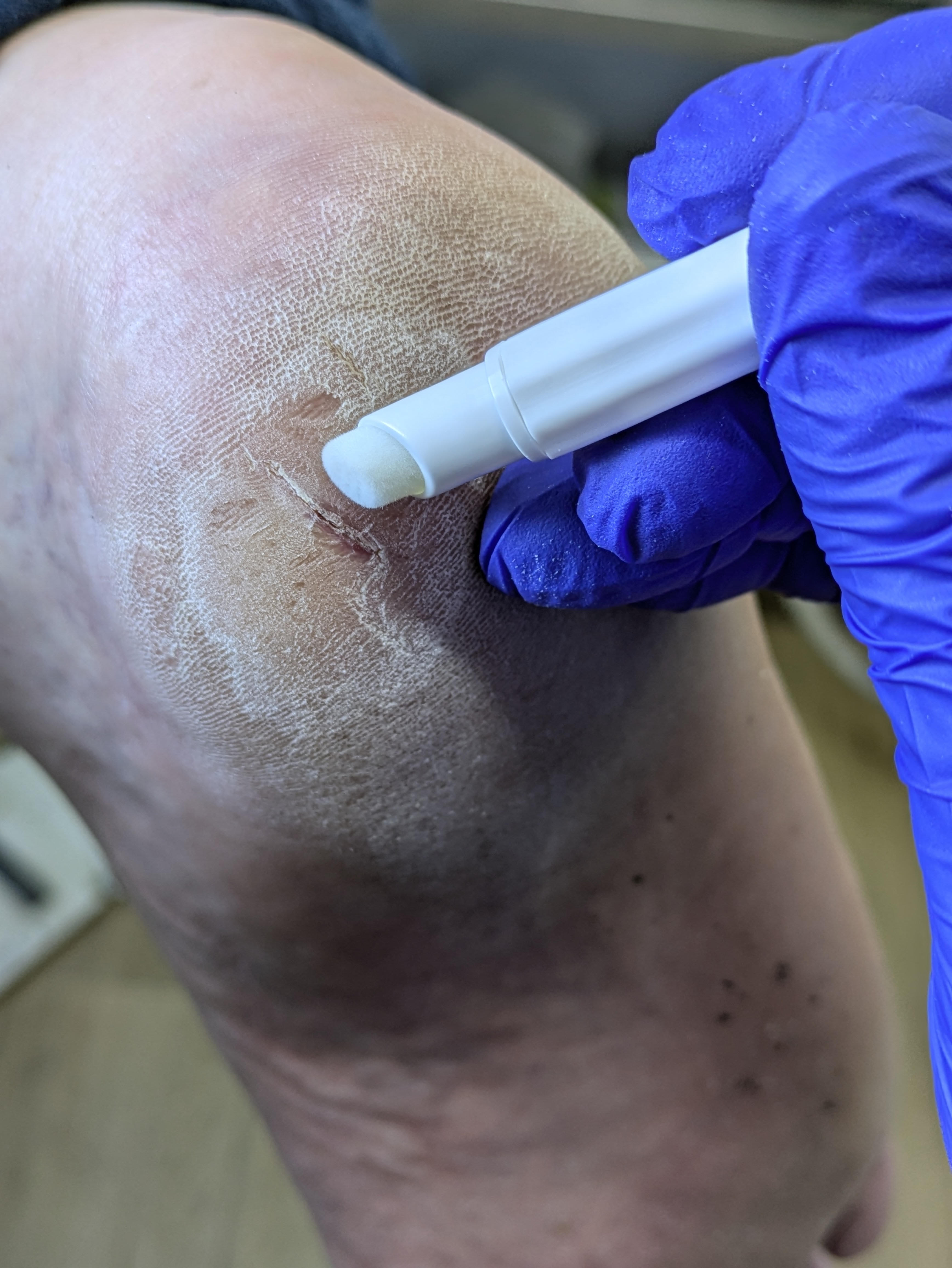
After removing callus, applying glue

Glue holding skin together
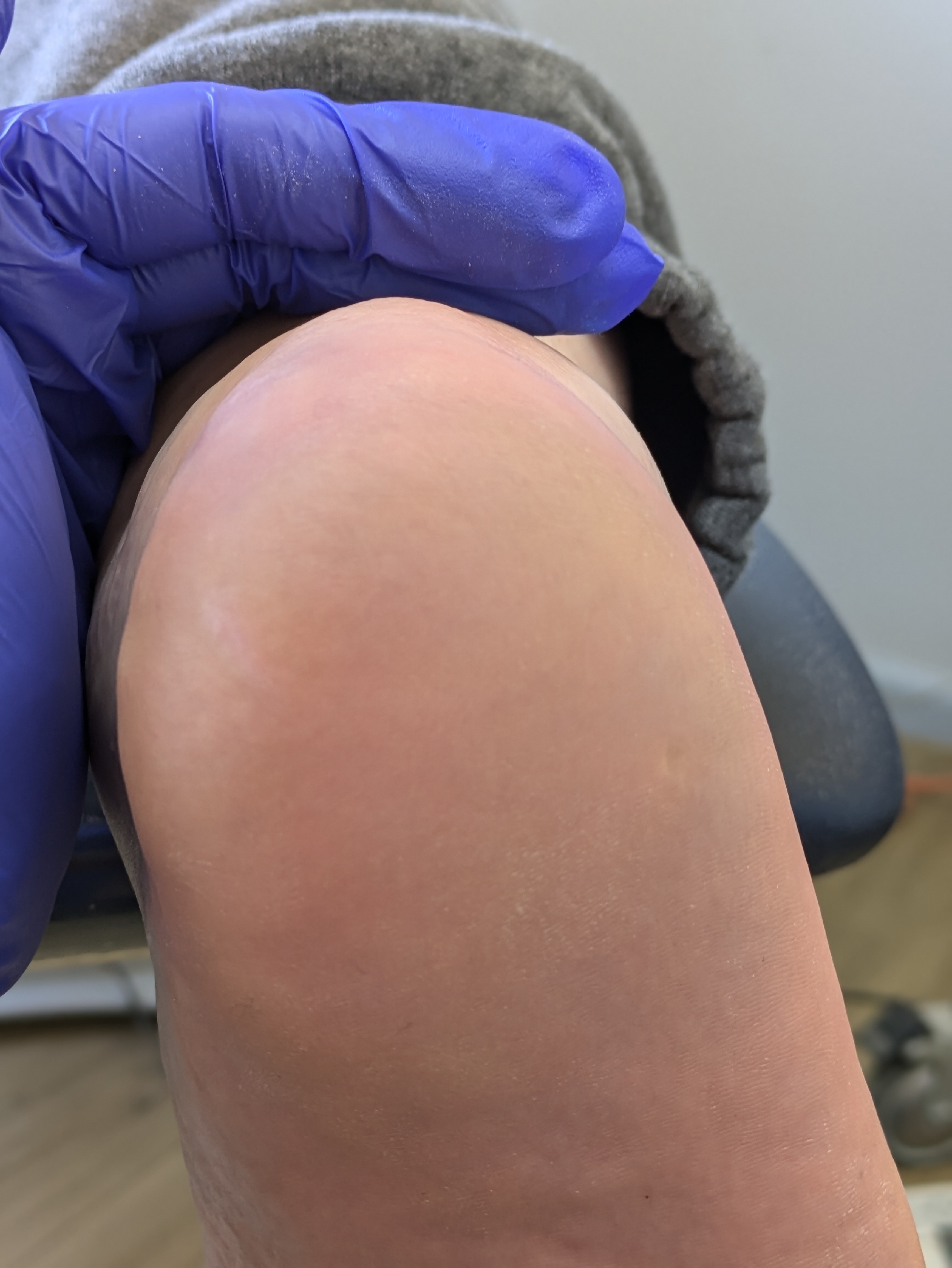
2 weeks post treatment
DIY Warning!
While it might be tempting, never use regular super glue on your heel cracks. It contains toxic chemicals like formaldehyde and can be a fire hazard when in contact with cotton. Stick to medical-grade adhesives for a safe and effective solution. Trust your podiatrist to do this for you properly if they offer the service.
Try these Four Important Routines
For best results treating cracked heels, combine a visit to a podiatrist with these four important routines:
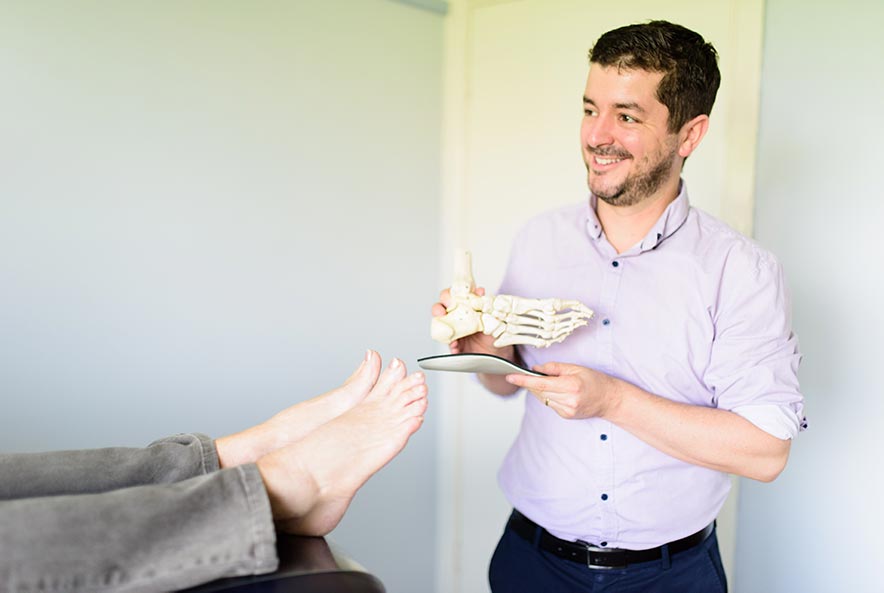 1. See a Podiatrist for Regular Callus Removal
1. See a Podiatrist for Regular Callus Removal
Keep seeing a podiatrist so they can remove hard skin (callus) from your heels and adjust your treatment plan. This helps your skin stay in the best condition. Ideally see one that has the option of using medical grade glue so this can be utilized if the cracks become too deep.
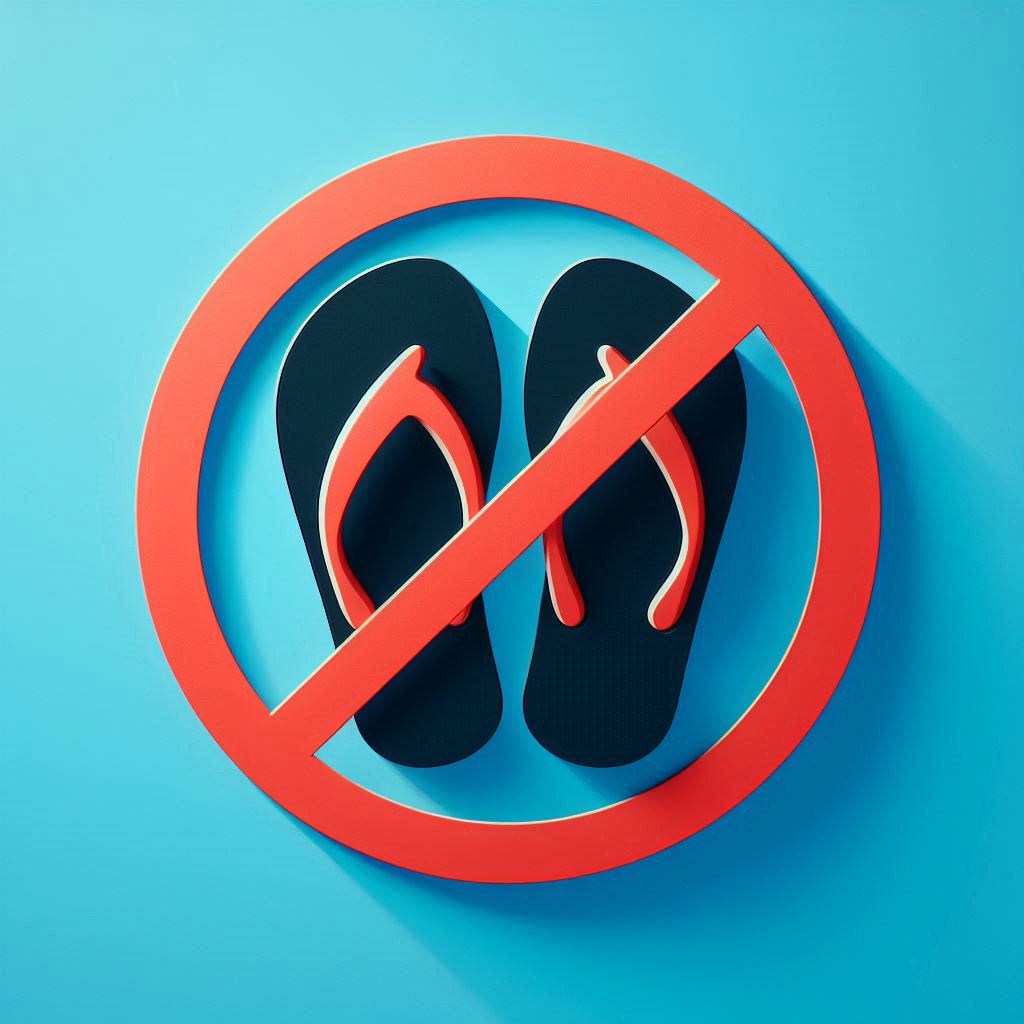 2. Wear the Right Type of Shoes
2. Wear the Right Type of Shoes
Wearing shoes that fit well and hold your feet securely can make a big difference. Say goodbye to flip-flops and loose sandals or boots. Instead, pick shoes that you can tie or fasten securely. Sandals with arch support and heel cups, secured around your ankle, are much better than flat flip-flops that slap against your heel. That constant slapping and rubbing can create more hard skin and cracks.
The best choice is to wear sneakers or athletic shoes with special inserts called foot orthoses most of time you’re on your feet. This reduces rubbing and slapping on your heels, which helps prevent calluses and cracked heels.
3. Moisturize with an Emollient (Urea 25-30%)
Not all moisturisers are equal when it comes to treating cracked heels.
- Emollients: Moisturise dry skin by reducing water loss from the epidermis (upper layer of skin).
- Keratolytic Agents: Break down the protein keratin in the outer layer of your skin. This action can help reduce dead skin buildup and get rid of flaking or scaling skin.
Urea is an emollient and a keratolytic making it perfect for callused cracked heels.
Use a heel balm that has 25% or 30% urea. Apply it at least twice a day, ideally in the morning and in the evening, especially during the first two weeks. If you can, put on socks afterward to help the balm soak in better, and do this soon after bathing or showering to lock in moisture. Over time, you can switch to a moisturizer with less urea (like 10-15%). If you notice any sensitivity or reactions, stop using it and seek professional help.
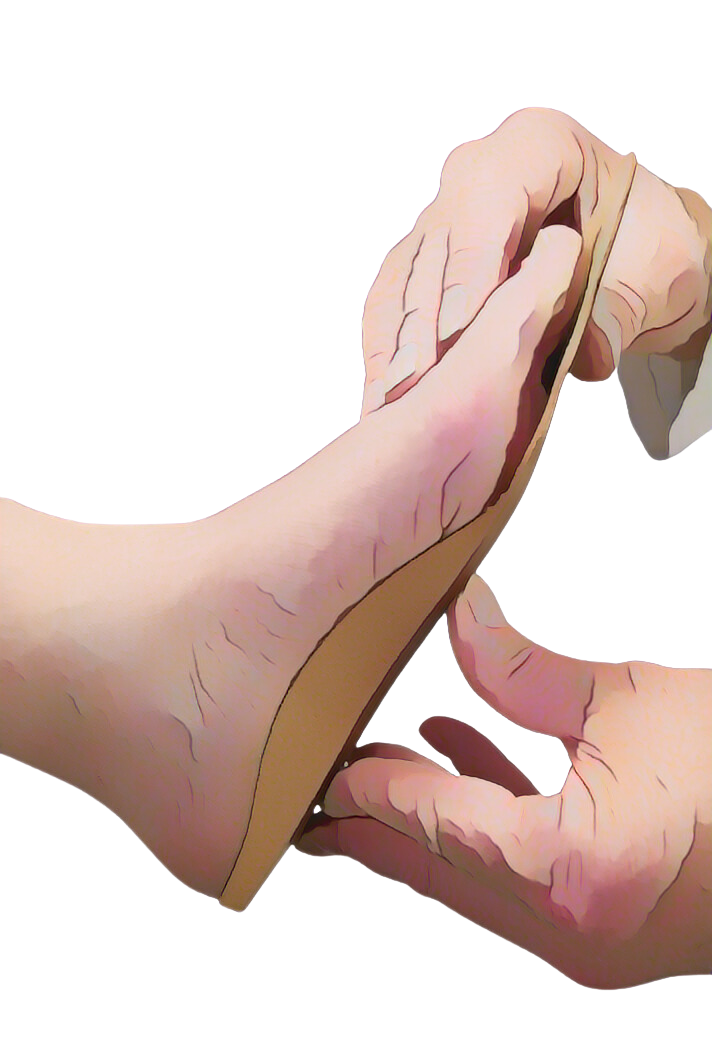
4. Use Arch Supports that Cup the Heel (Orthotic Therapy)
Let’s do a thought experiment. Imagine pushing a painted ball down on a flat surface. The paint would crack. Now, imagine putting the same painted ball into a bowl and pushing down—the cracks stay minimal. See the illustration below to help visualise this. The same sort of stress occurs to the skin around the fat pad of the heel it strikes the ground and it is better to contain it.
This is what arch supports with heel cups (foot orthoses) do: they contain the expansion of the fat pad under the heel by cupping it, healing existing cracks and preventing new ones. An orthotic supports under the arch, in a way bringing the ground up to the foot, which provides a more secure fit (less movement of the foot within the shoe) and takes pressure off the heel.
